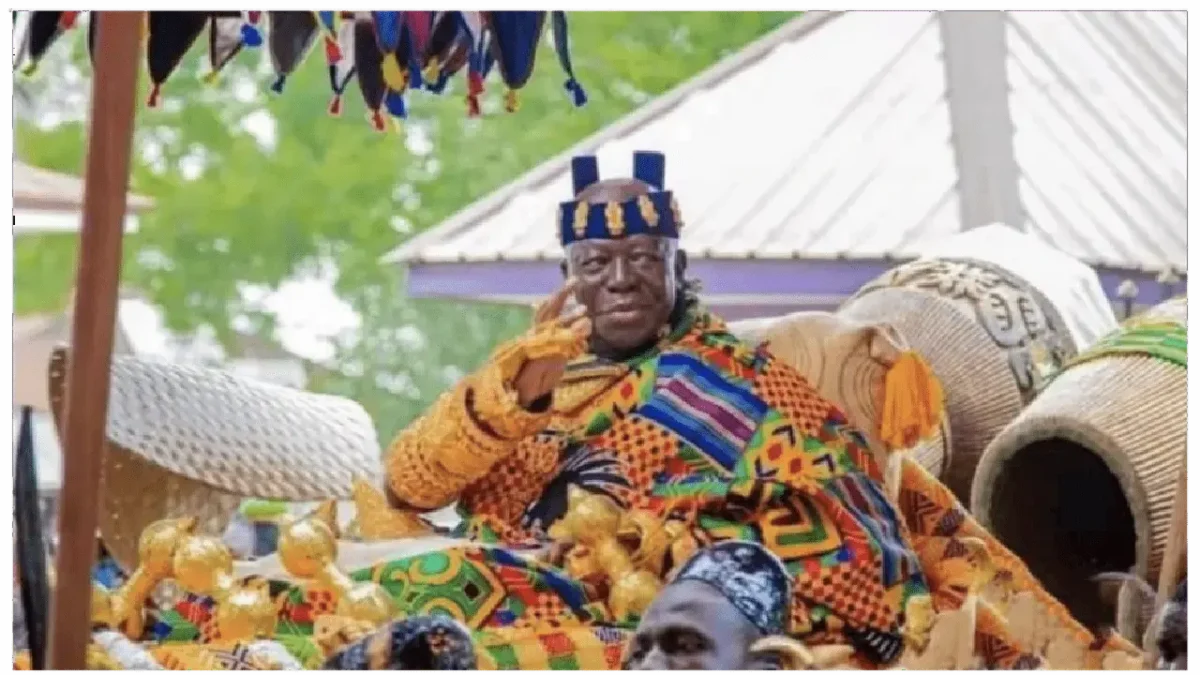Adae Kese, a festival that rivals the grandeur of Independence Day celebrations, is a magnetic event drawing individuals from every walk of life. It champions unity and culture unlike any other festivity – it’s the Adae or Akwasidae Festival, which also means the ‘Resting Place,’ celebrated within Ghana’s largest and illustrious Asante Kingdom.
The independence of the Asante Kingdom holds profound significance, prompting the annual celebration marking a pivotal moment in their journey towards statehood – the triumphant victory over the Denkyiras in the Battle of Feyiase, also known as the Asante Independence War. The festival has gained international recognition, and in 2014, the Adaekɛse Festival was featured on CNN.

Adae occurs every sixth week on the Asante calendar, spanning forty to forty-two days and adorned with the splendor of Awukudae or Fofie, comprising two distinct phases.
During the first phase, a solemn and intimate durbar unfolds within the confines of the king’s palace and sacred sites, attended exclusively by designated members of the royal family. Here, ancient rituals are meticulously observed, purifying the land from malevolent forces. Offerings of ceremonial foods and libations, such as schnapps and mashed yam, are tendered to honor the spirits of ancestors, beseeching their guidance and protection for the kingdom’s people. These rituals serve as emotional expressions of unity, prosperity, and the kingdom’s enduring greatness.
Transitioning to the second phase, the festivities explode into a public spectacle – the Grand Durbar. Adorned in resplendent kente cloth and golden regalia, the monarch parades through the ancient streets of Kumasi atop a palanquin, symbolizing triumph and unity. The ceremony is accompanied by throngs of joyful citizens dressed in their finest attire; the procession pulsates with rhythm, song, and dance, culminating in a jubilant gathering at the durbar grounds.
Here, the sacred Golden Stool, “Sikadwa Kofi,” embodiment of the Asante soul, is unveiled for all to behold. Amidst this awe-inspiring moment, the monarch assumes his regal position, receiving homage from his subjects. Yet, tradition dictates a specific protocol, with no woman or queen-mother seated in immediate proximity – a testament to cultural beliefs regarding gender roles and spirits.
Preceding the Grand Durbar, Queen Mother’s Day pays tribute to the indispensable role of women in Asante’s society, underscoring their contributions to the kingdom’s prosperity and growth.
Dignitaries from across the globe converge to pay homage, including present and former heads of state, paramount chiefs, government officials, and esteemed representatives. This gathering epitomizes the unwavering faith of the Asante people in their rich heritage and traditions.
As the monarch imparts wisdom upon his subjects, reflecting on the principles of inclusive leadership, the essence of the festival is captured – a celebration of culture, unity, and progress under the visionary leadership of Otumfuo Osei Tutu II.
Subscribe to gheducate.com for more intriguing stories and updates




